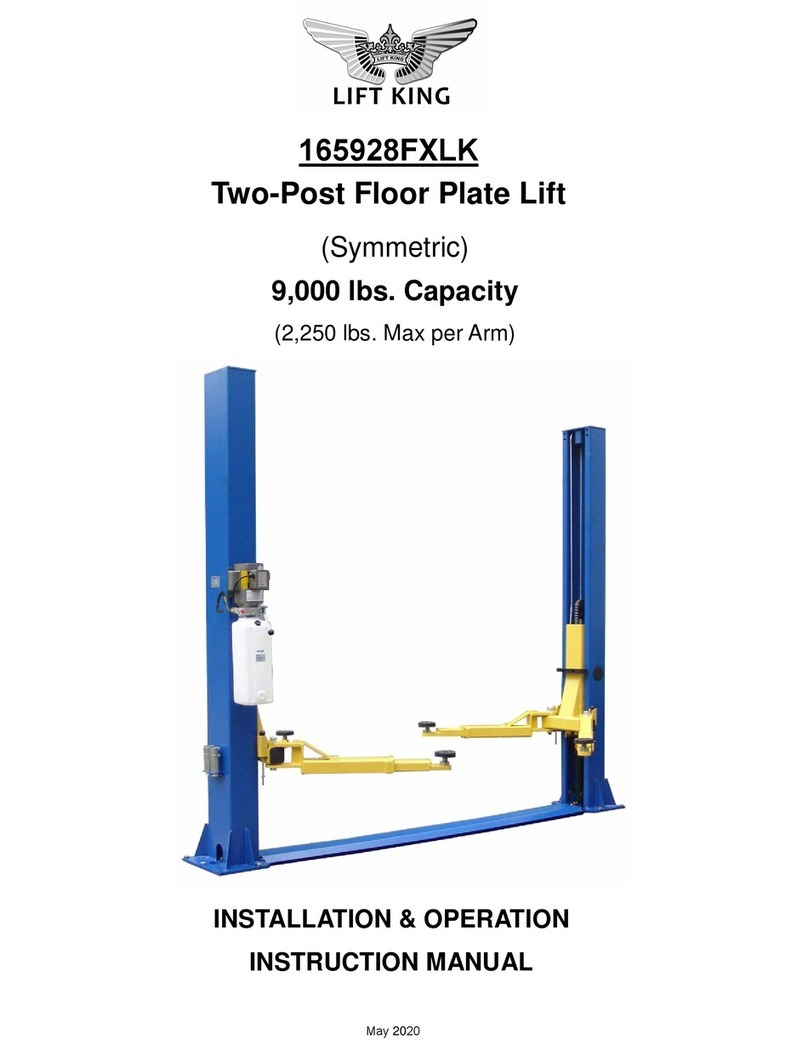
4
1.3 Safety Instructions
1. Do not raise a vehicle on the lift until the installation is completed as described in this manual.
2. Technicians should be trained to use and care for the lift by familiarizing themselves with the
publications listed above. The lift should never be operated by an untrained person.
3. Always position the arms and adapters properly out of the way before pulling the vehicle into,
or out of the bay. Failure to do so could damage the vehicle and/or the lift.
4. Do not overload the lift. The capacity of the lift is shown on cover of this document and on
the lift’s serial number tag
5. Positioning the vehicle is very important. Only trained technicians should position the vehicle
on the lift. Never allow anyone to stand in the path of the vehicle as it is being positioned
and never raise vehicle with passengers inside.
6. Position the arms to the vehicle manufacturer’s recommended pickup points. Raise the lift until
contact is made with the vehicle. Make sure that the arms have properly engaged the vehicle
before raising the lift to a working height.
7. Keep everyone clear of the lift when the lift is moving, the locking mechanism is disengaged,
or the vehicle is in danger of falling.
8. Unauthorized personnel should never be in the shop area when the lift is in use.
9. Inspect the lift daily. The lift should never be operated if it has damaged components, or
is malfunctioning. Only qualified technicians should service the lift. Replace damaged
components with manufacturer’s parts, or equivalent.
10. Keep the area around the lift clear of obstacles.
11. Never override the self-returning lift controls.
12. Use safety stands when removing or installing heavy vehicle components.
13. Avoid excessive rocking of the vehicle when it is on the lift.
14. To reduce the risk of personal injury, keep hair, loose clothing, fingers, and all body parts away
from moving parts.
15. To reduce the risk of electric shock, do not use the lift when wet, do not expose the lift to rain.
16. To reduce the risk of fire, do not operate equipment in the vicinity of open containers of
flammable liquids (gasoline).
17. Use the lift only as described in this manual, use only manufacturer’s recommended
attachments.
































